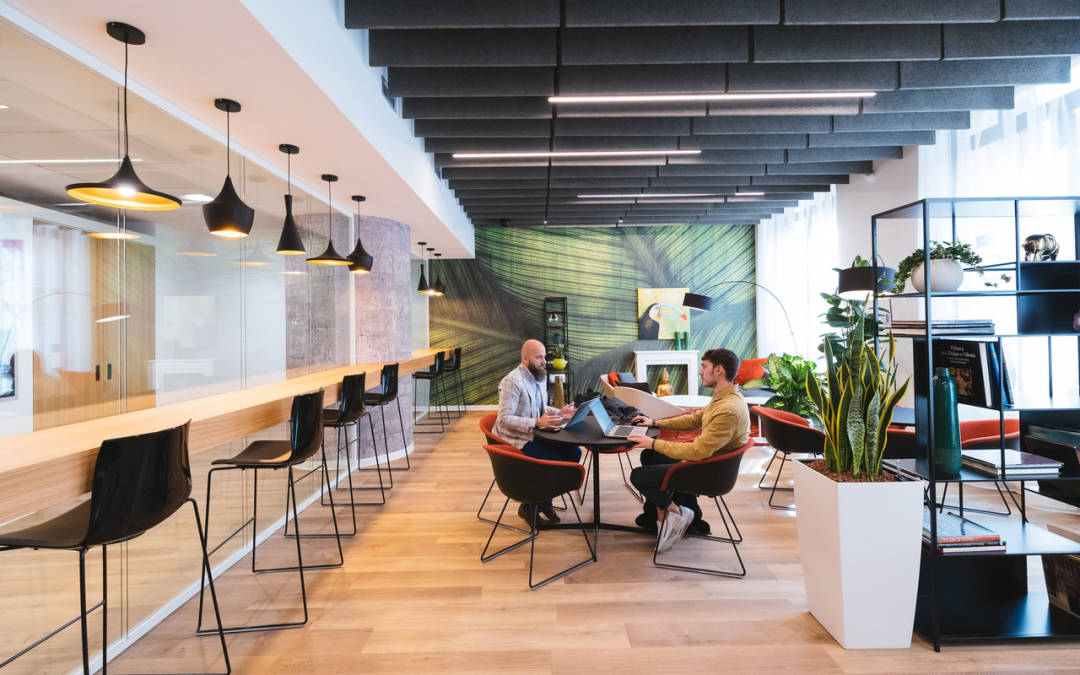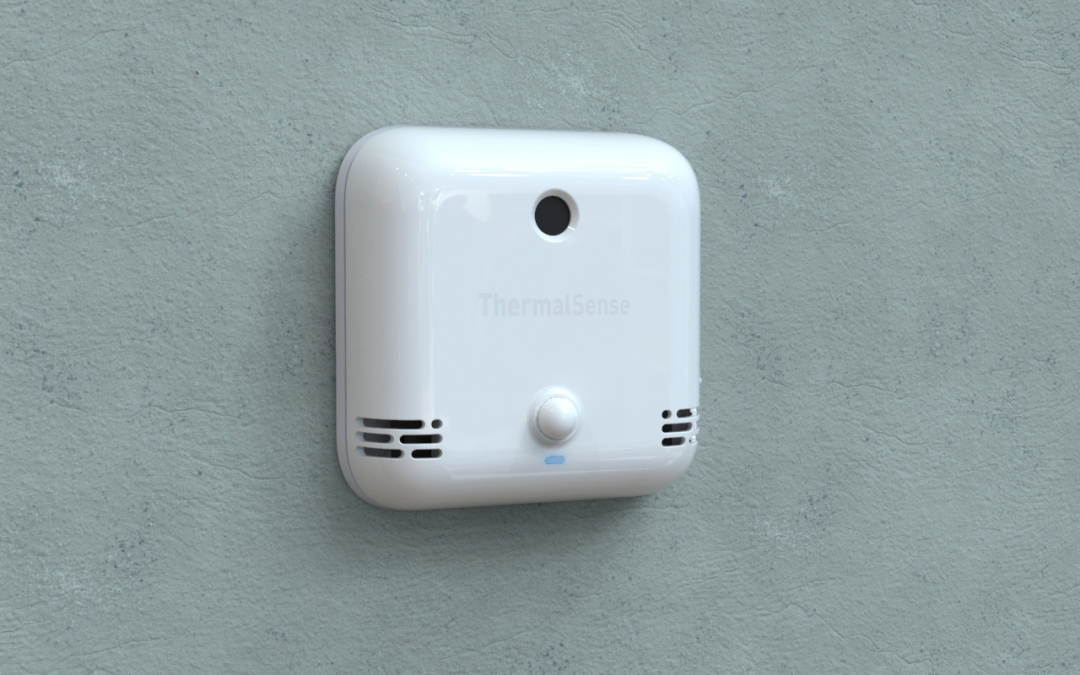As enterprise companies continue to innovate and compete in the global marketplace during the pandemic, keeping pace with the latest trends is of utmost importance. It’s not just about responding to new market forces; as we know, it’s also about staying ahead of the curve.
As the workforce changes, gone are the days when every employee reports to a desk five days a week. Instead, the hybrid work model has emerged as the dominant return-to-work approach, with corporate powerhouses such as Nationwide, Citigroup, Ford Motor Co., IBM, and General Motors Co. all opting to blend the best of in-office and remote working. Read more to read why.
Nearly 1,500 professionals who worked from home between March 2020 and March 2021 were surveyed by Harvard Business School, and the results showed that 61% of them would want to work from home two to three days a week, while 27% want to work remotely all the time.
They want to attract new talent.
The concept of a hybrid workspace is a mix of traditional office space and flexible workspaces. This trend is gathering steam as more companies embrace the benefits of having both options within their offices, but some organizations have already been using the model for years.
Many Fortune 500 companies have recently built out hybrid workspaces within their headquarters. Why? Because it helps attract top talent and increases employee satisfaction, leading to less turnover, higher productivity, and lower real estate costs for these organizations.
They want to make employees happy.
Many companies also have a strategic reason to embrace hybrid workspaces. They want their employees to be happier and more productive. This can be difficult to achieve in traditional office settings because when people sit at desks all day, they become disengaged and unproductive.
While this may seem common sense, it’s not just about giving employees a break from the cubicle grind—it’s about letting them work how they want to be more creative, produce better ideas, and ultimately become more loyal to your company.
They want to help their teams be more productive.
When it comes to working, the most important thing is to be productive. However, for some employees, a good work environment is also essential for happiness and job satisfaction.
While remote working has made it possible for companies to hire top talent from anywhere in the world and pay them less than their local counterparts, they’re still looking at ways to improve productivity locally and remotely.
Smart technology is cheaper and easier to use.
The truth is that smart technology is often cheaper and easier than the alternative. It’s cheaper to maintain, upgrade and use. Smart technology is also easier to set up, so you don’t have to train your employees on how to use it. The maintenance cost is lower because there are fewer moving parts in a smart building, which means fewer things that can break down or need repair work done.
Smart buildings are also simpler for new or unfamiliar employees; they’re easy enough for anyone who wants to learn how they work without fussing around with confusing manuals or finding someone who knows everything. If something goes wrong with the system—like an outage or glitch—you’ll probably be able to fix it yourself instead of having someone else come out from another company so that they can do their job properly (and charge you more).
They want to improve employee experiences.
Employees want a comfortable, flexible, and connected workspace that is cost-effective. As business leaders, you want to provide your employees with the best possible experience to help them be more productive and inspire creativity.
Enterprise companies are turning to hybrid workspace as an alternative to traditional office environments because it strengthens their ability to attract and retain top talent by improving employee experiences and supporting business growth.
They want to save money on space.
Why is this a big deal? Because it’s a major cost saving.
Hybrid workspaces can often accommodate the same number of people in less space, saving you money on real estate costs. And because there’s no need for expensive office furniture, you’ll also be paying less for your desks and chairs.
It’s not just about saving money on physical space; hybrid spaces also reduce IT costs by lowering the need for servers and other technology that would otherwise be needed if every employee were sitting at their desk in an office space. In addition, this can lead to more efficient use of hardware resources since they’re not used all day long while people are away from their desks working remotely (for example).
Fortune 500 Companies Adapting The Hybrid Work Model
In this section, you’ll learn about some of the most notable companies that have adopted a hybrid work model to build their businesses.
Alphabet (Google)
“We’ll move to a hybrid work week where most Googlers spend approximately three days in the office and two days wherever they work best. Since in-office time will be focused on collaboration, your product areas, and functions will help decide which days teams will come together in the office. There will also be roles that may need to be on-site more than three days a week due to the nature of the work.” – Sundar Pichai CEO of Google and Alphabet
Read his full email to his team here.
Microsoft
“Our approach to places hinges on bridging the gap between the physical and digital and evolving with employee needs. And when it comes to meeting spaces, we’re turning our pre-pandemic design philosophy on its head and designing for the people not in the room. By combining new design patterns with Microsoft Teams Rooms innovations, we’re giving everyone a seat at the table so they can fully participate, no matter where they are. ” – Satya Nadella Chairman and CEO of Microsoft
Check out Microsoft’s broad approach as they transition to hybrid work here.
Amazon
“For our corporate roles, instead of specifying that people work a baseline of three days a week in the office, we’re going to leave this decision up to individual teams. This decision will be made team by team at the Director level. We expect that there will be teams that continue working mostly remotely, others that will work some combination of remotely and in the office, and still others that will decide customers are best served having the team work mostly in the office. We’re intentionally not prescribing how many days or which days—this is for Directors to determine with their senior leaders and teams.” – Andy Jassy CEO of Amazon
Read Andy’s full message to his employees here.
Apple
Tim Cook mentioned in his internal memo that some of the company’s employees will come to the office at least three days a week, preferably Mondays, Tuesdays, and Thursdays, while they will be allowed to work remotely on Wednesdays and Fridays.
Staff will also have the option to work remotely for up to two weeks a year, “to be closer to family and loved ones, find a change of scenery, manage unexpected travel, or a different reason all your own,”
Ford
Ford’s new-hybrid model allows 25,000 staff to work from home or the office, collaborate in groups of up to 20 people, and make their schedules. Under this new model, hybrid employees are instructed to come into the office when collaborating is needed and work at home when heads-down work is on the agenda.
The benefits of the hybrid office space are clear, and more companies are turning to this model for their own offices. However, just like everyone keeps on saying – there’s no one size fits all. That’s why If you’re considering moving into a new office building or renovating an existing one, keeping some of these corporate powerhouses strategies in mind will help ensure everyone gets what they need from the space.
If you’re looking to implement a hybrid environment in your company and want to know how to do it, look no further. Check out our ebook “Setting Up A Hybrid Workplace: Guide For Facility Managers.” It’s full of tips and tricks for facility managers who want to transition from a traditional office space into a hybrid one, along with information about setting up the best possible workspace for employees.
Looking for tools your office can adapt in a hybrid workplace? Connect with us today! We can schedule you a no-sales and no-strings-attached demo with one of our workplace experts.
Source:
https://www.charterworks.com/ford-hybrid-mask-mandates/
https://www.businesstoday.in/industry/it/story/how-amazon-facebook-apple-google-are-shifting-to-hybrid-work-regimes-298436-2021-06-11
https://www.geekwire.com/2021/amazon-will-leave-remote-work-decisions-individual-team-leaders-new-policy-twist/
https://www.microsoft.com/en-us/microsoft-365/blog/2021/05/21/how-microsoft-approaches-hybrid-work-a-new-guide-to-help-our-customers/
https://techcrunch.com/2021/06/11/tech-companies-are-looking-at-more-flexible-work-models-when-offices-reopen/
https://blog.google/inside-google/life-at-google/hybrid-approach-work/
https://www.linkedin.com/pulse/rise-hybrid-work-model-how-why-hybridity-works-douglas-ferguson/






